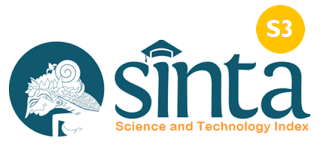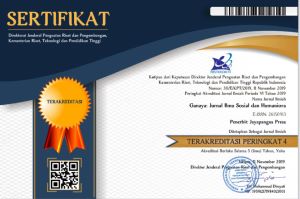Analisis Beban Kerja sebagai Instrumen Penataan SDM
Studi Implementasi di Itwasda Polda Gorontalo
DOI:
https://doi.org/10.37329/ganaya.v8i4.4897Keywords:
Workload Analysis, Human Resource Management, Regional Inspectorate, Policy Implementation, Police OrganizationAbstract
Workload disparities in police organizations threaten the effectiveness of internal oversight functions. The Regional Inspectorate (Itwasda) of Gorontalo Regional Police faces an imbalanced distribution of workload across sections reaching 35%, with indications of overload in some personnel and underutilization in others. This study aims to analyze the effectiveness of Workload Analysis (WLA) implementation as a human resource management instrument at Itwasda Gorontalo Regional Police, identify supporting and inhibiting factors, and formulate strategic recommendations for optimizing human resource management. The research methodology employs a descriptive qualitative approach with data collection techniques through in-depth interviews, participatory observation, and documentation studies. Data analysis was conducted using the Miles and Huberman interactive model, with data validity ensured through source and method triangulation as well as member checks. Research findings reveal significant workload disparities: Itbid Section (138% - overload), Dumasan Section (142% - overload), and Renmin Section (76% - underutilized). WLA implementation successfully reduced disparities from 66% to 23% following task redistribution, with a 35% increase in organizational efficiency and 20% improvement in personnel job satisfaction. Supporting factors include leadership commitment, data availability, and quality human resource capacity. Main constraints are limitations in integrated information systems, personnel resistance to change, and limited technical understanding of WLA methodology. The study concludes that WLA implementation effectively addresses workload disparities and enhances organizational performance through proportional task redistribution. Strategic recommendations include strengthening leadership commitment, continuous training, digital information system development, effective change management, and replicating best practice models to other police units to achieve professional and accountable human resource governance.
References
Analalaki, S. (2022). Dampak Beban Kerja Berlebihan Pada Unit Kriminal Kepolisian Terhadap Stres Traumatik. Jurnal Kriminologi Indonesia, 18(2), 145–160.
Boon, C., Eckardt, R., Lepak, D. P., & Boselie, P. (2018). Integrating Strategic Human Capital and Strategic Human Resource Management. The International Journal of Human Resource Management, 29(1), 34–67.
Cordner, G. W. (2023). Police Administration. Routledge.
Creswell, J. W. (2023). Research Design: Qualitative, Quantitative, and Mixed Methods Approaches (6th ed.). SAGE Publications.
Dessler, G. (2020). Human Resource Management (16th ed.). Boston: Pearson.
Fanesa, O. S. (2025). Pengaruh Konflik Interpersonal dan Stres Kerja Terhadap Counterproductive Work Behavior dengan Ketidakpuasan Kerja Sebagai Variabel Mediasi: Studi Pada Karyawan Kantor Perumda Air Minum Kota Padang. Universitas Andalas.
Fariq, W. M., Zamsiswaya, Z., & Tambak, S. (2022). Telaah Kepustakaan (Narrative, Tinjauan Sistematis, Meta-Analysis, Meta-Synthesis) dan Teori (Kualitatif, Kualitatif, Mix Method). Journal Social Society, 2(2), 75–84.
Guslidiawati, G., Nasrizal, N., & Rasuli, R. (2021). Pengaruh Dukungan Manajemen Puncak, Dukungan Legislatif, Sumber Daya Manusia (SDM) Terhadap Implementasi Sistem Informasi Perencanaan Pada Provinsi Riau Dengan Ketersediaan Anggaran Sebagai Variabel Intervening. Jurnal Daya Saing, 7(1), 28–43.
Hakim, A. R. (2025). Pengawasan Internal oleh Kepolisian Terhadap Penyelesaian Tindak Pidana Secara Restoratif. Unes Journal of Swara Justisia, 8(4), 927–935.
Hardiansyah, D. (2023). Evaluasi Faktor Kritis Kinerja Sumber Daya Manusia Kepolisian. Jurnal Manajemen Publik Indonesia, 5(1), 33–47.
Karim, M., & Rehman, W. (2012). Performance Management in Police Organizations: An Institutional Framework. Asian Journal of Public Administration, 34(2), 123–140.
Kiefer, T., Hartley, J., Conway, N., & Briner, R. (2018). Managing Change in Police Organizations: A Contingency Theory Approach. Journal of Change Management, 18(4), 327–345.
Lipp, L. (2018). Job Demands and Emotional Exhaustion in Police Organizations. Police Quarterly, 21(3), 283–345.
Mathis, L. R., & Jackson, J. H. (2019). Human Resource Management (MSDM) (15th ed.). Boston: Cengage.
Miles, M. B., Huberman, A. M., Rohidi, T. R., & Mulyarto. (1992). Analisis Data Kualitatif: Buku Sumber Tentang Metode-Metode Baru. Depok: Penerbit Universitas Indonesia (UI-Press).
Mumford, E. A., Liu, W., & O’Leary, M. S. (2025). US Law Enforcement Officers’ Stress, Job Satisfaction, Job Performance, and Resilience: A National Sample. Police Quarterly, 28(1), 104–126.
Nugroho, B. (2022). Praktik Manajemen SDM, Keterlibatan Kerja, dan Efektivitas Organisasi Kepolisian. Jurnal Administrasi Publik Indonesia, 10(3), 55–70.
Nundarto, N., Supriyanto, S., & Hendrajaya, H. (2025). Hubungan Antara Beban Kerja dan Tingkat Konsentrasi Anggota Polisi di Polsek Brangsong. Jurnal Ilmiah Manajemen, Ekonomi, & Akuntansi (MEA), 9(2), 3357–3380.
Nurwiranti, N., & Rachmah, E. (2021). Hubungan Antara Beban Kerja dengan Stres Kerja Pada Anggota Polisi di Bagian SDM Polda Jatim.
Otoo, F. N. K. (2024). The Mediating Role of Employee Performance in the Relationship Between Human Resource Management (HRM) Practices and Police Service Effectiveness. IIM Ranchi Journal of Management Studies, 3(2), 108–141.
Paauwe, J., & Boon, C. (2018). Strategic HRM in Public Organizations: Challenges and Change Management. Public Management Review, 21(1), 45–65.
Pangestu, N. P. (2022). Pengaruh Stres Kerja dan Beban Kerja Terhadap Kinerja Sumber Daya Manusia dengan Dukungan Sosial Sebagai Variabel Moderating: Studi Pada Anggota Kepolisian di Polrestabes Kota Semarang. Universitas Islam Sultan Agung.
Prasojo, E., & Kurniawan, T. (2019). Efektivitas Implementasi Analisis Beban Kerja di Sektor Publik Indonesia. Jurnal Administrasi Publik Indonesia, 15(2), 201–218.
Purnama, N. A. (2025). Model Pengawasan Ombudsman RI dalam Menindaklanjuti Pengaduan Masyarakat Terhadap Proses Penyelidikan di Kepolisian. Proceedings Series on Social Sciences & Humanities, 23, 28–40.
Robbins, S. P., & Judge, T. A. (2023). Organizational Behavior (19th ed.). Harlow: Pearson Education.
Rouza, D., & Yanto, S. (2020). Evaluating Performance Using MBO and BARS Approaches. UM Surabaya Journal.
Rukin, S. P. (2019). Metodologi Penelitian Kualitatif (Ed. 1). Sulawesi Selatan: Yayasan Ahmar Cendekia Indonesia.
Van Meter, D. S., & Van Horn, C. E. (1975). The Policy Implementation Process: A Conceptual Framework. Administration & Society, 6(4), 445–488.
Wilson, J. M., & Bennett, R. (2018). Systematic Workload Analysis in American Police Organizations. Policing: An International Journal, 41(1), 102–119.
Wilson, J. M., & Grammich, C. A. (2024). Reframing the Police Staffing Challenge: A Systems Approach to Workforce Planning and Managing Workload Demand. Policing: A Journal of Policy and Practice, 18, paae005.
Wilson, J. M., & Weiss, A. (2012). A Performance-Based Approach to Police Staffing and Allocation. Washington, DC: US Department of Justice, Office of Community Oriented Policing Services.
Zeng, X., Zhang, X., Chen, M., & Liu, J. (2020). Organizational Support, Workload, and Burnout Among Police Officers. Journal of Police and Criminal Psychology, 35(3).
Downloads
Published
How to Cite
Issue
Section
License
Copyright (c) 2025 Lina Linggar Wati, Arifin Tahir, Yacob Noho Nani (Author)

This work is licensed under a Creative Commons Attribution-ShareAlike 4.0 International License.
An author who publishes in the Ganaya : Jurnal Ilmu Sosial dan Humaniora agrees to the following terms:
- Author retains the copyright and grants the journal the right of first publication of the work simultaneously licensed under the Creative Commons Attribution-ShareAlike 4.0 License that allows others to share the work with an acknowledgement of the work's authorship and initial publication in this journal
- Author is able to enter into separate, additional contractual arrangements for the non-exclusive distribution of the journal's published version of the work (e.g., post it to an institutional repository or publish it in a book) with the acknowledgement of its initial publication in this journal.
- Author is permitted and encouraged to post his/her work online (e.g., in institutional repositories or on their website) prior to and during the submission process, as it can lead to productive exchanges, as well as earlier and greater citation of the published work (See The Effect of Open Access).
Read more about the Creative Commons Attribution-ShareAlike 4.0 Licence here: https://creativecommons.org/licenses/by-sa/4.0/.








